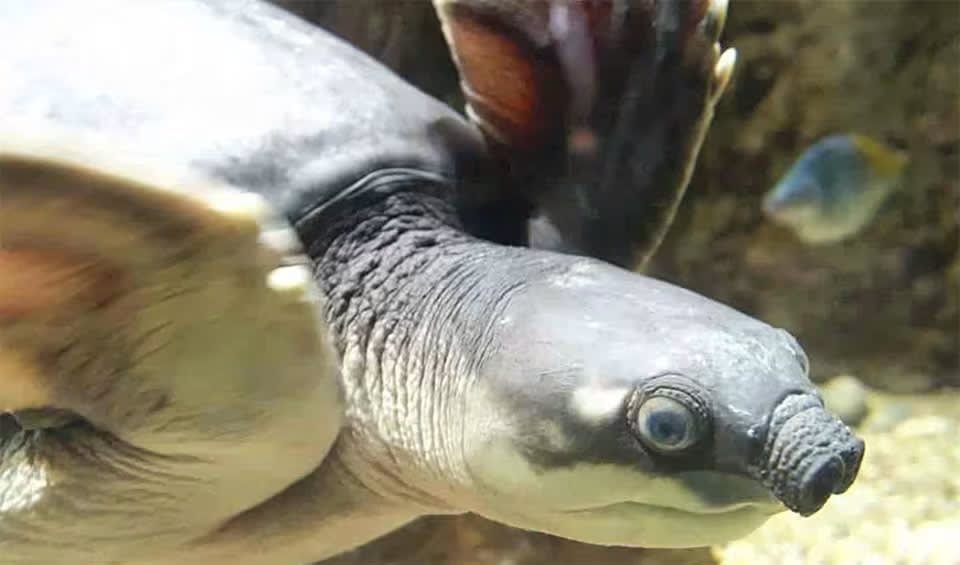A distinctive species of turtle, easily identified by its pig-like snout, which functions as a specialized organ for foraging and respiration. This unique adaptation allows the turtle to breathe while submerged in water, with only the snout breaking the surface. Their range is limited and quite specific; they are native to the river systems found in the Northern Territory of Australia and the southern lowlands of Papua New Guinea.
The habitat of the pig-nosed turtle is predominantly freshwater systems, but they are also known to venture into estuarine environments, showcasing their adaptability to varying salinity levels. These turtles prefer slow-moving waters that provide lush vegetation and ample food sources.
As omnivores, pig-nosed turtles have a diverse diet but prefer plant matter, such as fruits and leaves that fall into the water. They will also consume animal matter, including insects and small invertebrates, which provides them with a balanced diet essential for their health and growth.
The peculiar appearance of the Pig-nosed Turtle, particularly their snout and flipper-like limbs, makes them a target for the exotic pet trade. This demand has led to overcollection in the wild, which, combined with habitat destruction due to logging and development, has significantly reduced their numbers. These factors have contributed to the species being classified as Vulnerable by the IUCN Red List.
Distribution
 Australia
Australia Indonesia
Indonesia Papua New Guinea
Papua New GuineaAnything we've missed?
Help us improve this page by suggesting edits. Glory never dies!
Suggest an editGet to know me
Terrestrial / Aquatic
Altricial / Precocial
Polygamous / Monogamous
Dimorphic (size) / Monomorphic
Active: Diurnal / Nocturnal
Social behavior: Solitary / Pack / Herd
Diet: Carnivore / Herbivore / Omnivore / Piscivorous / Insectivore
Migratory: Yes / No
Domesticated: Yes / No
Dangerous: Yes / No




